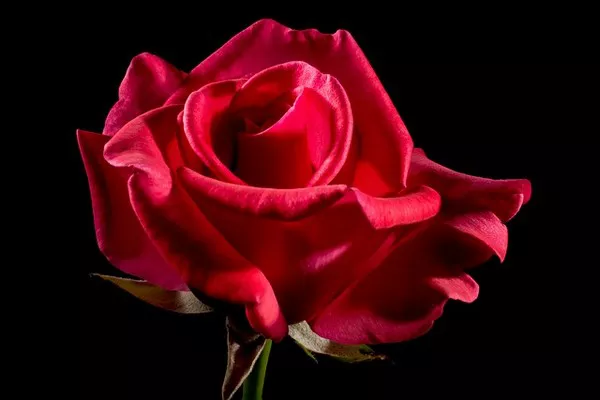In the vast tapestry of human emotions, few sentiments resonate as deeply as love. Throughout history, cultures around the world have sought to express and convey this complex emotion in myriad ways. One of the most enchanting and timeless methods is through the language of flowers. The art of assigning specific meanings to different blooms, known as floriography, has allowed individuals to communicate sentiments that words alone may struggle to convey. In this article, we explore the profound connection between flowers and love, delving into the rich symbolism and cultural significance that these exquisite blossoms carry.
Roses: The Epitome of Love
No discussion on the language of flowers and love is complete without delving into the quintessential symbol of romantic affection—the rose. Revered for centuries, roses boast a spectrum of colors, each carrying its own nuanced meaning. The classic red rose, with its deep, velvety hue, is synonymous with passionate love and desire. It is an enduring symbol of romance, making it a popular choice for declarations of love on special occasions such as anniversaries and Valentine’s Day.
Conversely, the delicate pink rose embodies sweetness and gratitude, making it an ideal choice to express admiration and appreciation. White roses, with their pristine petals, signify purity and innocence, making them a popular choice for weddings and new beginnings. The multifaceted language of roses allows individuals to convey a range of emotions within the realm of love, making them an ever-present and versatile symbol in the world of floriography.
Lilies: Elegance and Devotion
Lilies, with their graceful appearance and alluring fragrance, are another group of flowers deeply entwined with expressions of love. These blooms, associated with purity and majesty, convey a sense of refined elegance that transcends mere aesthetics. White lilies, in particular, symbolize purity and commitment, making them a popular choice in wedding bouquets and arrangements.
The Madonna lily, historically linked to the Virgin Mary, holds connotations of motherly love and nurturing. This adds another layer of meaning to the lily, making it a versatile flower capable of expressing various facets of love. As a gift, lilies carry the message of devotion and a pure, unblemished affection that stands the test of time.
Tulips: Declarations of Love
Tulips, with their vibrant hues and unique shape, offer a fresh perspective on the language of flowers and love. Originating from Persia, where they were associated with love and paradise, tulips have become a global symbol of declarations of love. Red tulips, akin to red roses, convey deep passion and undying love. Meanwhile, pink tulips symbolize affection and caring, making them an ideal choice for expressing love in a platonic or familial context.
The versatility of tulips extends to their wide range of colors, allowing individuals to select blooms that best capture the nuances of their emotions. From the bold and passionate to the soft and tender, tulips serve as an expressive canvas for the language of love.
Daisies: Innocent Love and Purity
Daisies, with their simple yet charming appearance, evoke a sense of innocence and purity. These unassuming flowers carry a gentle message of love and loyalty, making them a suitable choice for expressing a sweet, uncomplicated affection. In the language of flowers, daisies are often associated with innocence and childlike purity, making them a thoughtful gift to symbolize the pure and untarnished aspects of love.
Sunflowers: Adoration and Radiance
The sunflower, with its vibrant yellow petals reaching towards the sun, is a striking representation of adoration and warmth. These flowers are known for their association with positivity and loyalty, making them an ideal choice to express unwavering love and admiration. The sunflower’s ability to follow the sun’s path across the sky symbolizes constancy and the enduring nature of love. As a gift, sunflowers convey a message of joy, radiance, and a steadfast affection that brightens the recipient’s life.
Cultural Significance of Flowers in Love
Beyond the individual meanings assigned to specific blooms, the cultural significance of flowers in expressions of love varies across different societies. In Victorian England, for instance, the language of flowers reached its zenith, with elaborate floral arrangements serving as a sophisticated means of communication. Each flower, carefully selected and arranged, conveyed a specific sentiment, allowing individuals to engage in a silent dialogue of emotions.
In Japanese culture, cherry blossoms hold profound significance in the context of love. These delicate blooms, fleeting in their beauty, symbolize the transient nature of life and the ephemeral quality of love. Hanami, the traditional practice of appreciating cherry blossoms, is a cultural celebration of the beauty and fragility inherent in love and life.
Conclusion
In the delicate dance of human emotions, the language of flowers adds a layer of subtlety and nuance to expressions of love. From the timeless allure of roses to the understated charm of daisies, each bloom carries a unique message, allowing individuals to convey the depth and breadth of their emotions. As we continue to navigate the intricate landscape of human connections, the language of flowers stands as a testament to the enduring power of nature to capture and convey the essence of love in all its forms. So, the next time you find yourself searching for the perfect way to express your feelings, consider the profound language of flowers—an eloquent and timeless medium for the language of love.


